Different Types of Dragon Fruit Plant Species & Varieties
There are majorly four types of dragon fruit varieties. You can identify them on the basis of their color white, pink, yellow, and red with distinct tastes and textures.
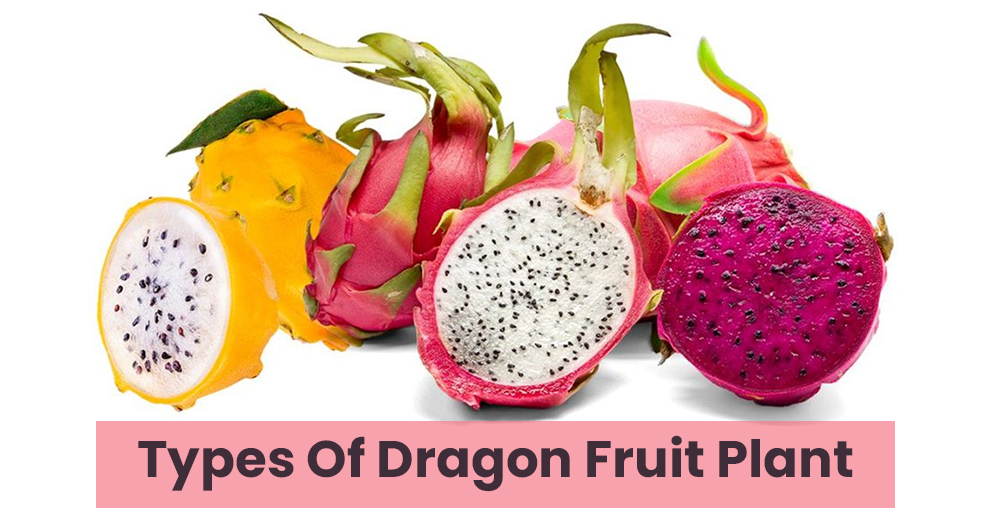
Dragon fruit, also known as Pitaya, is a tropical fruit belonging to the cactus family. Scientifically known as Hylocereus Undatus, it is also called Strawberry pear and Pitahaya.
The name dragon fruit comes from its appearance. The most common varieties of dragon fruits come in bright red skin with green scales. The scaly appearance matches the actual scales of a dragon.
It is hard to estimate the exact number of dragon fruit varieties. Broadly all different types of dragon fruits can be categorized into four types. These four types are red, white, pink, and yellow. All varieties of dragon fruits that exist can be grouped under these four types
Whether it is small, big, sweet, or tangy, you have plenty of dragon fruit varieties to choose from.
Since all these varieties have different sun, heat, and cold tolerances, when you grow them at your home, you will have to choose the best one according to your growing conditions and taste buds.
Different dragon fruits have flesh of different colors ranging from yellowish orange skin to hot pink or deep purple. Some may be white with a pinkish tint. All of them have tiny black seeds.
The color of the dragon fruit’s flesh also determines how is it going to taste. The ones with white flesh are said to have a milder taste whereas dark flesh can be found to be much sweeter.
Let’s look at the different varieties of dragon fruit in detail.
Different Kinds of Dragon Fruits
- Yellow Dragon Fruit Varieties
- Red Flesh Dragon Fruit
- White Flesh Dragon Fruit Plant Types
- Pink Dragon Fruits
So, the two main species of dragon fruit are Hylocereus and Selenicereus which include many cultivars and hybrids. The most commonly cultivated varieties are Hylocereus Polyrhizus (white dragon fruit) and Hylocereus Undatus (red dragon fruit).
In addition, there are yellow dragon fruit (Selenicereus megalanthus) and other less common varieties that belong to Selenicereus species.
It’s worth noting that a significant number of hybrid varieties are developed by crossing different varieties to get the desired texture, taste, color and resistance to pests and diseases.
1. Yellow Dragon Fruit Varieties
Yellow dragon fruit has a unique, cylindrical shape. It is a small to medium size fruit, typically weighing around 150-300g. Its skin is yellow or white with small protrusions on it. These spikes or protrusions naturally start falling off as the fruit starts to mature.
The flesh of the fruit is white and has small black edible seeds inside. Yellow dragon fruit has a sweet and juicy texture with a tropical flavor. Yellow dragon fruits are said to be the sweetest of all varieties.
Let’s check out some yellow dragon fruit varieties:
A. Ecuador Palora Dragon Fruit
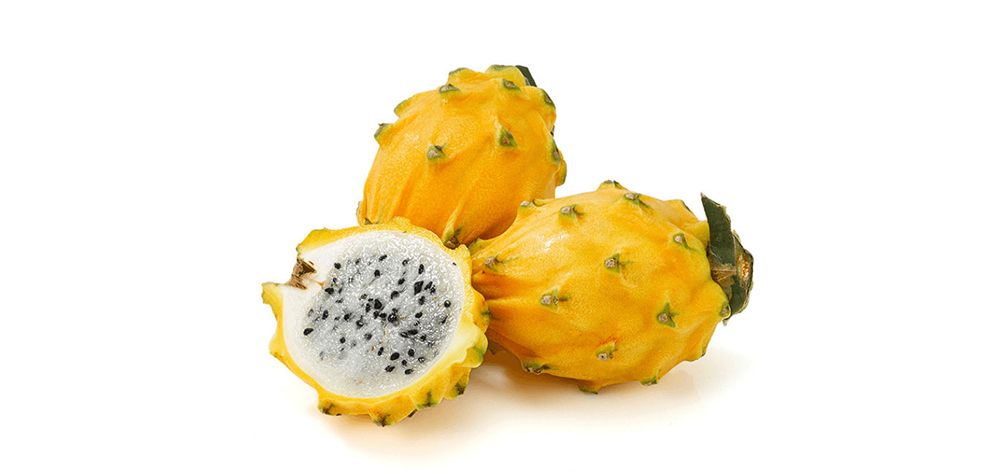
This is one of the sweetest varieties of dragon fruits. It tastes like honey. The Palora dragon fruit is very spiky with around 12 spikes per petal.
This feature makes it hard to pick and usually, people wear gloves and brush off the spikes while harvesting it. The skin is thick making it harder to cut into. The plus point of this fruit is that it is self-fertile.
B. Thai Yellow Dragon Fruit
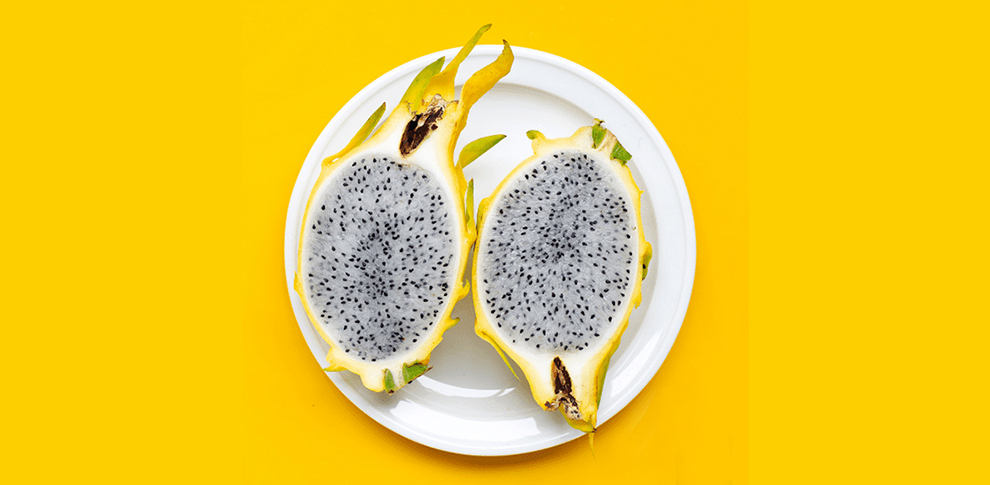
Thai yellow dragon fruit doesn’t have any thorns, making it easier to pick and handle. It grows quite quickly, about 1.5 times faster compared to some other varieties. So, within 12 to 14 months, you will get several branches and sub-branches with fruits of good size.
The downside of this dragon fruit is it requires cross-pollination. It has a mildly sweet flavor but is less sweet than Palora.
C. Golden Dragon Fruit
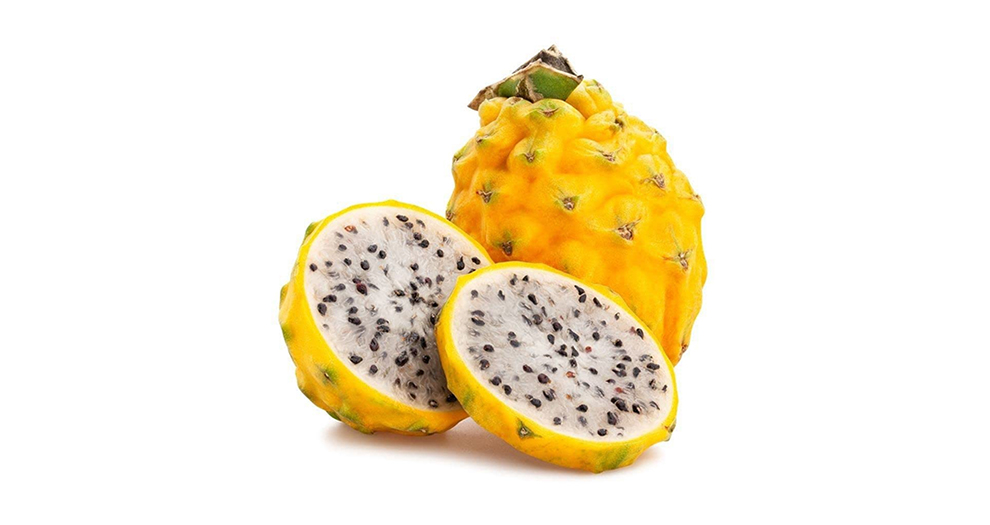
Golden dragon fruit is a variety of pitaya with golden-yellow skin and white or yellow flesh. It is known for its sweetness and crisp texture. It’s a hybrid of Selenicereus megalanthus and Hylocereus undatus. It’s a good source of antioxidants, fiber, and vitamin C. It’s typically eaten fresh, but can also be used in smoothies, desserts and as a topping.
2. Red Flesh Dragon Fruit Varieties
There are several varieties of red flesh dragon fruit, also known as pitaya or pitahaya. Some examples include the Red Pitahaya, Red Dragon Fruit, and the Red Hylocereus.
These types of dragon fruit plant have red or pink skin and red or pink flesh. They are known for their sweet and tangy taste and are often used in desserts and smoothies.
All are high in antioxidants, fiber and vitamins. They are also widely grown in tropical regions such as Central and South America, Southeast Asia and the Caribbean.
Some red flesh dragon fruit varieties include:
A. Red Jaina Dragon Fruit
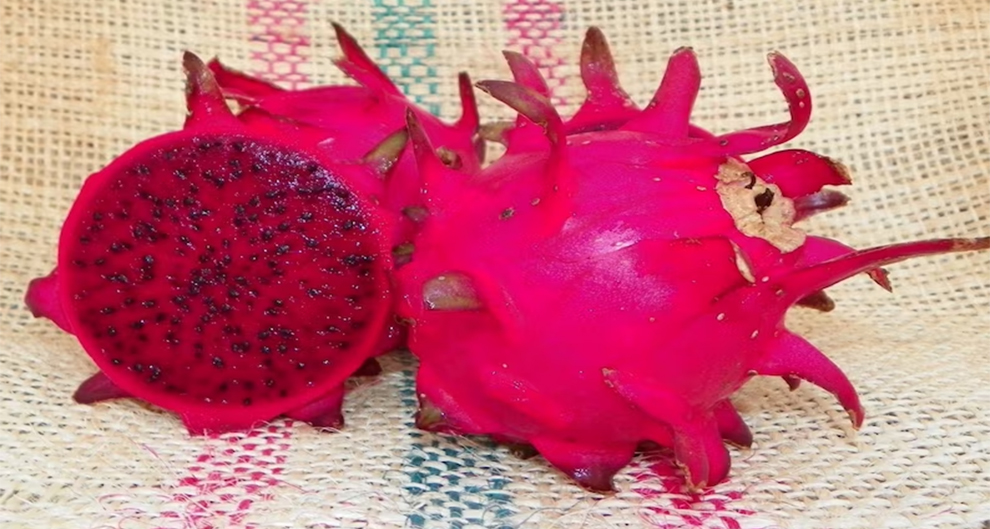
With a deep red flesh, this variety is extremely juicy. It is a self-pollinating variety, small in size weighing an average of 0.5 – 0.7 lbs.
Red Jaina gets easily adapted to a variety of growing conditions and soils. It produces the best fruits when allowed to climb. The huge round attractive flowers are highly fragrant and usually last only one night.
B. Zamorana Dragon Fruit
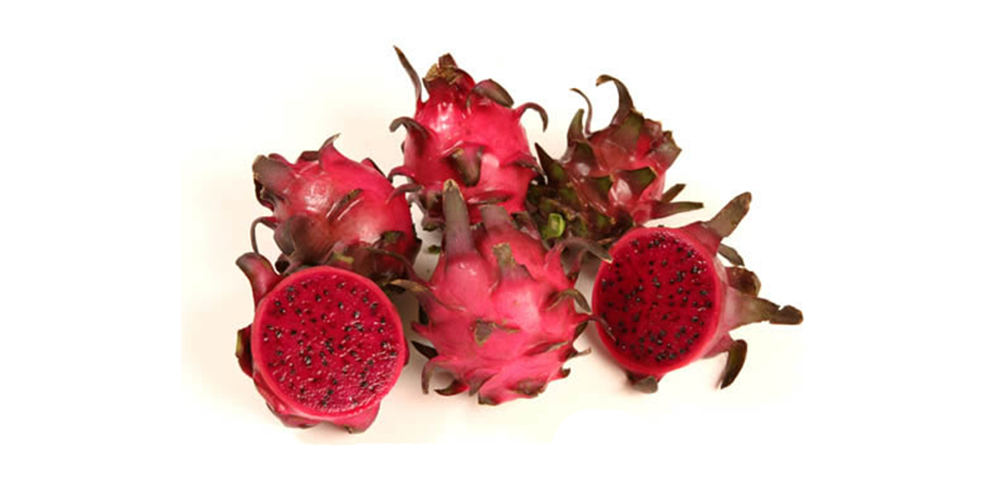
This is a medium-sized red dragon fruit variety with a mild sweet flavor. It has dark red colored flesh and is a medium to large size fruit weighing an average of 0.5 to 1.0 lbs.
Zamorana is a self-fertile fruit, but if you need a bigger fruit size, it is essential to hand-pollinate the seeds. It has a mild sweet flavor.
C. Costa Rica Sunset Dragon Fruit
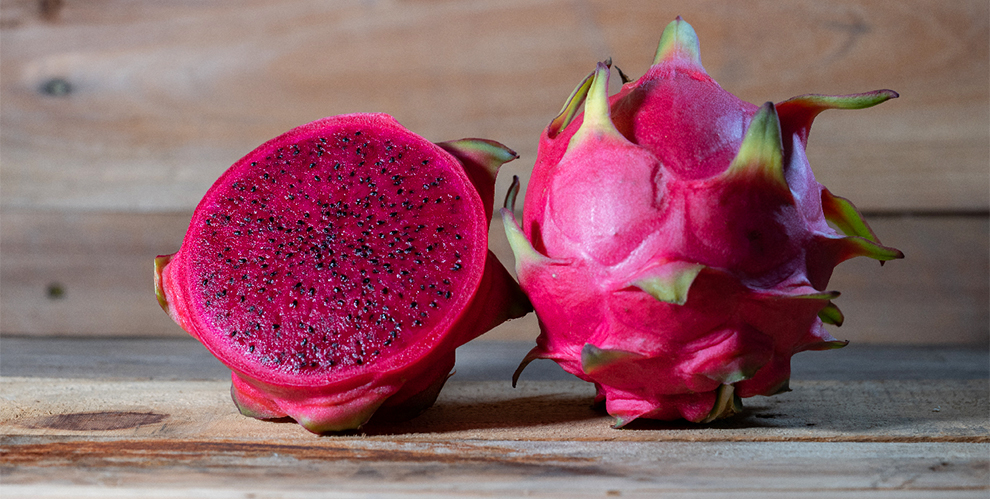
This variety is an easy-to-grow terrestrial with fleshy stems. The beautiful white, fragrant flowers bloom at night in late spring to early fall. The plant produces round red colored fruits covered with scales.
The sweet flavored red colored pulp is enclosed in a thin rind and numerous small black seeds. The fruit can be eaten fresh or can be used to flavor pastries and drinks.
3. White Flesh Dragon Fruit Plant Types
White flesh dragon fruit, also known as Hylocereus undatus or Pitahaya, is a type of cactus that produces large, round fruit with white or pinkish flesh and small black seeds. The fruit has a sweet, juicy taste and is high in antioxidants and vitamin C.
It is commonly used in desserts and smoothies and can also be eaten fresh or cut up in salads. Among all the different kinds of dragon fruit, these cultivars include Thompson, the most largest and popular dragon fruit that weighs up to 1.5 pounds.
Several varieties of white flesh dragon fruit are:
A. Harpua Dragon Fruit
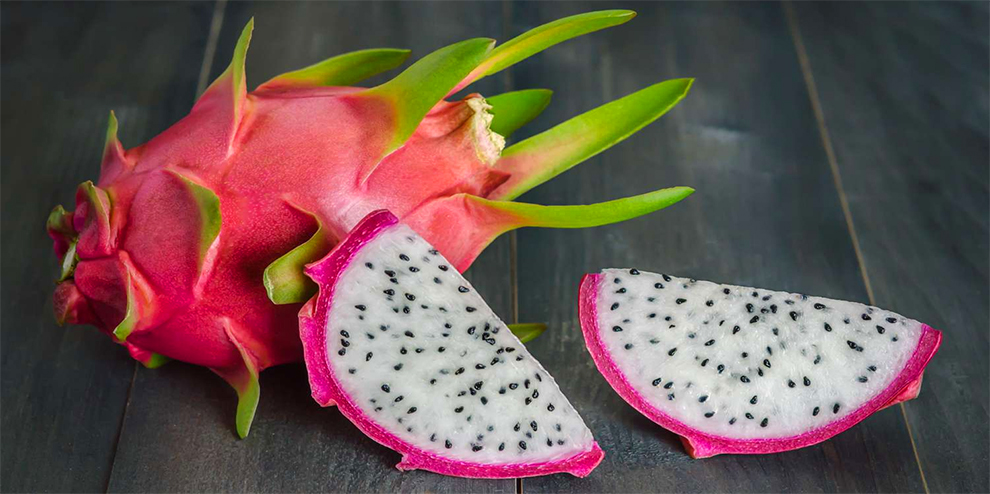
Harpua is a medium to large size white flesh dragon fruit that weighs about 1 pound. It has a snowy semisweet white pulp with a flavor of mild melon. Harpua sets fruit easily as it is a self-pollinating variety.
Stems are extremely thick with small thorns. Each mature stem typically gets 2 to 3 fruit per year, making it a good producer. Harpua has night-blooming flowers that measure over 15 inches across.
B. Neitzel Dragon Fruit
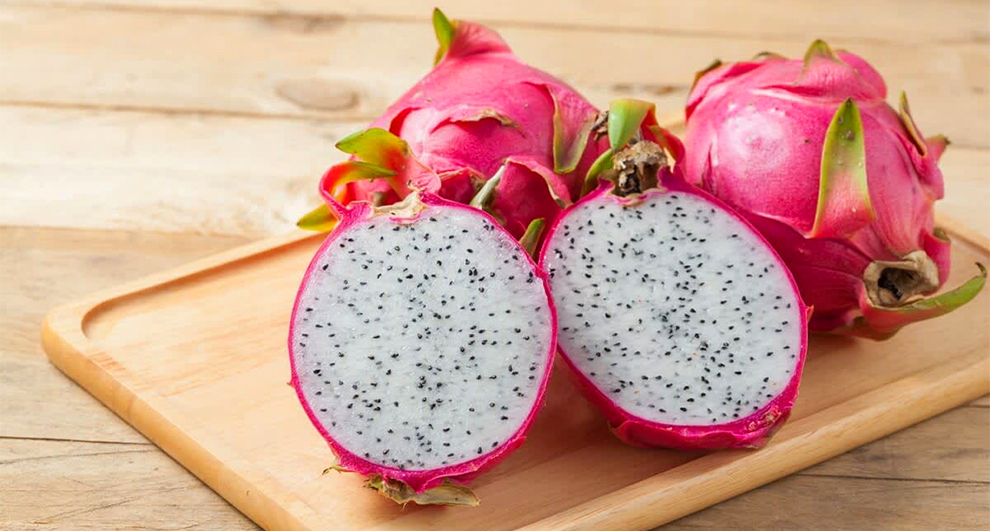
The fruits of Neitzel are red with green tips containing delicious white flesh inside. Neitzel White is a wonderful mid-high yield, self-pollinating variety that is small in size. It usually weighs an average of 0.3 – 0.7 lbs. The fruit is sweeter and more delicious when chilled.
C. David Bowie Dragon Fruit
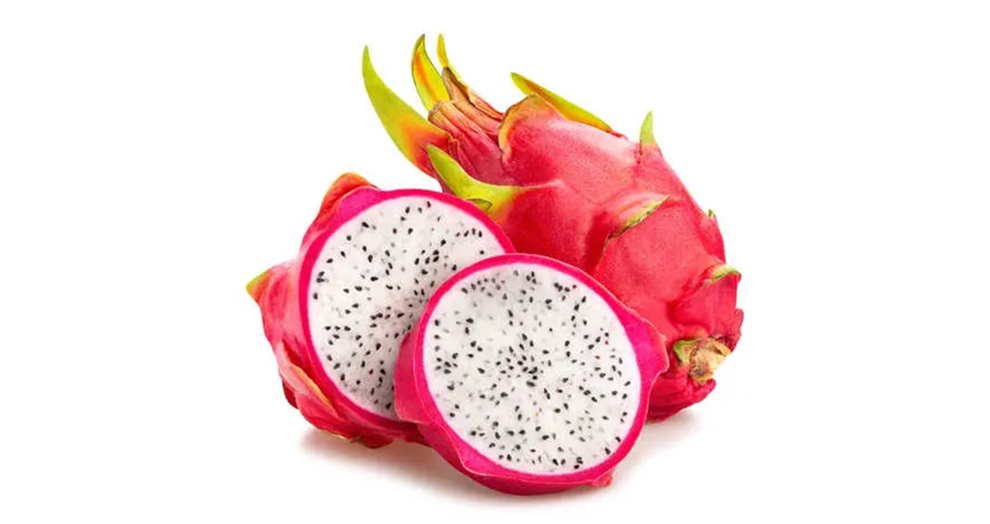
David Bowie is a slender white variety with a sweet and tangy flavor like a lemon. The fruit comes in a size medium to large weighing up to a pound. This fruit is best eaten fresh. However, it is good for juicing and garnishing.
4. Pink Dragon Fruit Plant Varieties
Pink dragon fruit is round or oval and can vary in size from small to large depending on the variety. The skin of pink dragon fruit is typically pink or red and is covered in small, soft spines that can be easily removed by rubbing the skin with a towel or brush.
The flesh of the fruit can vary from white to pinkish or red with small, black seeds. The leaves are thick, fleshy, and can be either straight or wavy. It is sweet and juicy in taste, with a texture similar to that of a kiwi.
Let’s look into some of its varieties:
A. Voodoo Child Dragon Fruit
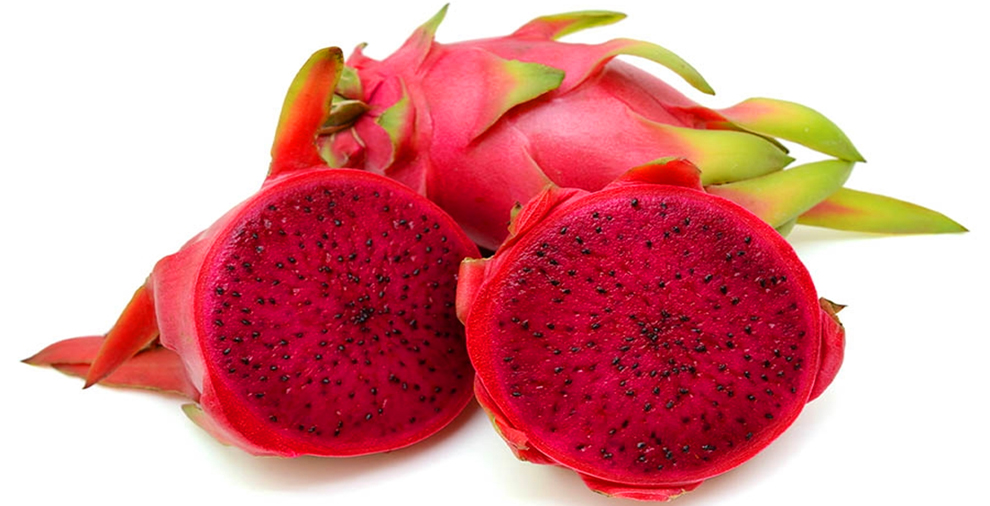
This variety comes in olive green color foliage. Its fruit is red in color with tiny fin like structures which are almost brown in color.
It has fleshy sturdy stems. Flowers are huge, with blooms over 15 inches. This variety typically has more fruits as it is the first and last to bloom.
The inner flesh of the fruit is bright red purplish color with a semi-firm surface.
B. Cosmic Charlie Dragon Fruit
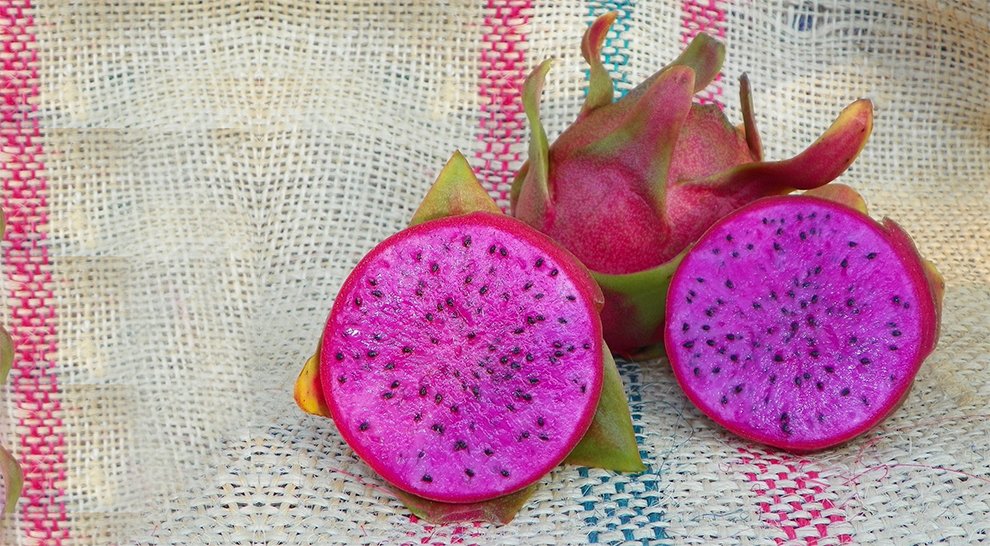
This is a variety that is produced from Hylocereus guatemalensis and Hylocereus undatus. It is a fast-grower that forms a purple-fleshed fruit with a grape-like flavor. They are large up to an average of 1 to 1.5 pounds.
C. American Beauty Dragon Fruit
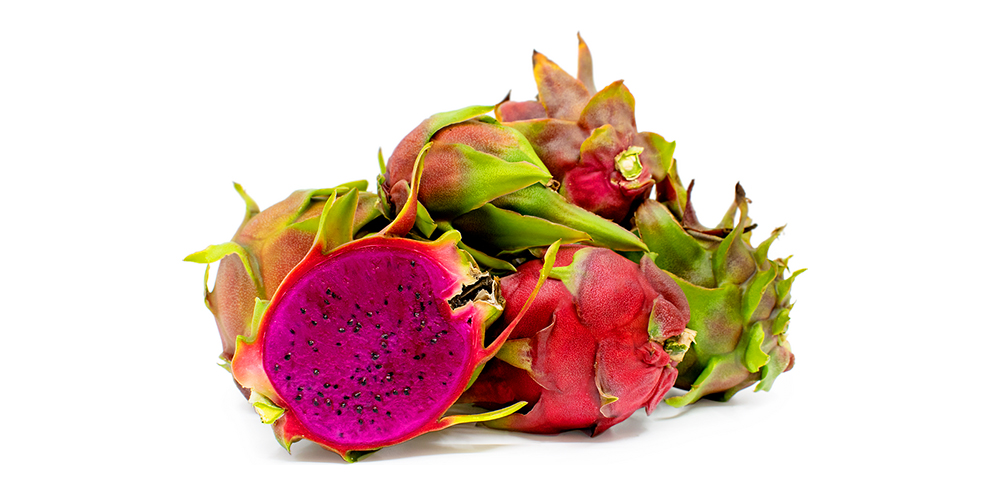
It is a self-fertile, fast-growing purple-fleshed variety of dragon fruit that produces a medium to large fruit weighing from .5 to 1 lb. The ripe fruit is round in shape. The fins that are dark green in appearance merge into the pink skin that gives the fruit a nice green-to-pink shade.
Self-Pollinating Dragon Fruit Varieties List
Self-pollination is the transfer of pollen from the anthers of a flower to the stigma of the same or another flower on the same plant. This can occur naturally or can be induced through artificial means.
It is in contrast to cross-pollination, which is the transfer of pollen from the anthers of one flower to the stigma of another flower on a different plant. Self-pollination can lead to inbreeding and a decrease in genetic diversity within a population.
Now let us look at some of the self-pollinating varieties of dragon fruit:
- American Beauty
- Voodoo Child
- Sugar dragon
- Townsend pink
- Colombian yellow
- Desert king
- Peruvian yellow
- Ecuador palora
- Sin Espinas
- Pink Panther
- Vietnamese White
- Dark Star S9
- San Ignacio
- Royal Red
- Natural Mystic
- Shayna
How To Identify Dragon Fruit Species?
There are three main varieties of dragon fruit, each with its unique characteristics:
1. Hylocereus undatus (white flesh): This variety has white or pinkish flesh and small black seeds. The skin is typically pink or red and covered in small, soft spines. The fruit is sweet and juicy, with a texture similar to that of a kiwi.
2. Hylocereus polyrhizus (red flesh): This variety has bright red flesh and small black seeds. The outer layer is pink or red and has small, soft spines. It is juicy and has a sweet flavor.
3. Selenicereus megalanthus (yellow flesh): This variety has yellow or orange flesh and small black seeds. The skin is typically green and covered in small, stiff spines. The fruit is less sweet and less juicy than the other two varieties and has a texture similar to that of a pear.
It’s also worth noting that the shape, size, and color of the fruit can vary depending on the cultivar. Also, you can tell the variety by their leaves. Hylocereus undatus has a wavy leaf while Hylocereus polyrhizus leaf is straight.
Dragon Fruit Benefits
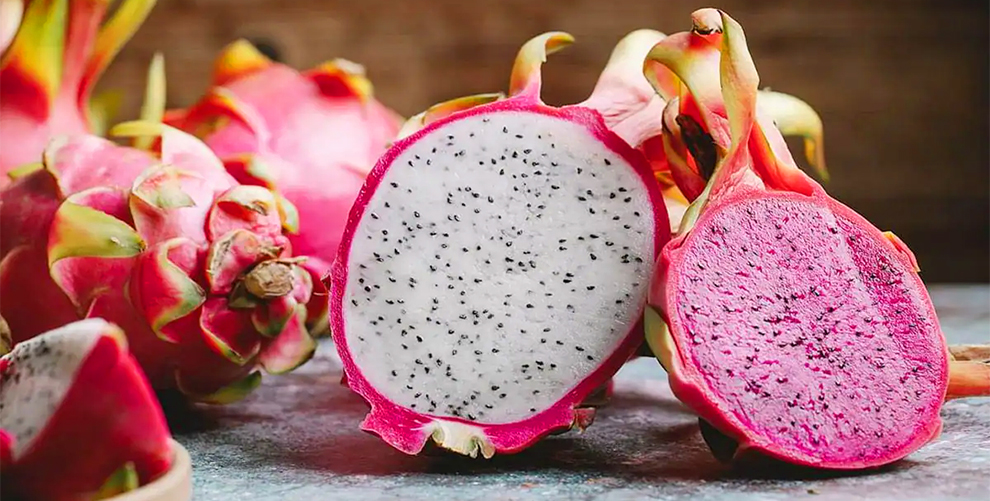
Dragon fruit, also known as pitaya or strawberry pear, is a tropical fruit that is high in antioxidants and vitamin C. It also contains small amounts of other vitamins and minerals, such as vitamin B and iron.
Additionally, dragon fruit is low in calories and high in fiber, which can help with weight management and digestion.
The fruit is also known to have anti-inflammatory properties, which may be beneficial for reducing the risk of certain diseases.
Since it is high in antioxidants, it can help protect the body against damage from free radicals and may help reduce the risk of certain diseases.
Related: How to care for dragon fruits? | How fast does dragon fruit grow?
Dragon Fruit Information and FAQs
Q. Which color dragon fruit is best?
Ans. Both red and white dragon fruit have similar nutritional value and taste. The red dragon fruit has a slightly sweeter taste and a more vibrant color, while the white dragon fruit has a more delicate flavor and a softer texture.
Both are considered to be delicious and healthy options. Ultimately, the best dragon fruit is one that you enjoy the taste and texture of.
Q. What is the rarest dragon fruit color?
Ans. The rarest color of dragon fruit is yellow. Yellow dragon fruit is less common than red or white varieties and can be difficult to find in certain areas.
Q. What dragon fruit is the sweetest?
Ans. The yellow dragon fruit is said to have a sweeter and more tropical taste than the red and white types of dragon fruit plant, and its texture is said to be creamier.
However, its rareness and availability may vary depending on the location and cultivation method.
Q. Where to find Blue Dragon Fruit?
Ans. Blue dragon fruit is difficult to find as they are rare. The blue fruit, also known as Pithaya, is native to Central America and Southern Mexico. It is also cultivated in Southeast Asia and the United States, Australia and the Caribbean.
The blue variant of the dragon fruit comes with a mild pink outer covering and blue flesh or in a deep purple shade.
The blue dragon fruit is not edible. The color indicates that the fruit is not ripe and is yet to attain its full growth. An unripe blue version of this fruit will turn pink, red, or yellow when it ripens.
Q. Does green dragon fruit exist?
Ans. Green dragon fruit, also known as “Horned Melon” or “Kiwano” is a different dragon fruit species altogether. It is native to Africa and is not a cultivar of the dragon fruit. It has a green, spiky exterior and a bright orange, jelly-like interior.
The flavor is often described as a mix of cucumber and lime, with a slight sweetness. It is less common than the more popular dragon fruit (red and white varieties) and it can be difficult to find in certain areas. So, it’s not a cultivar of the dragon fruit but it’s a different species.
